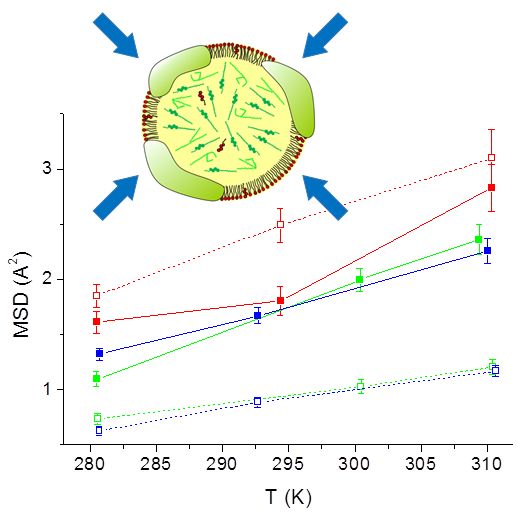News
EPJ Data Science Highlight - The power of novel data to understand political sentiment
- Details
- Published on 10 August 2017

In the aftermath of recent (and surprising) election results, it became evident that poll results do not tell the whole story about voters' intentions. In a study published in EPJ Data Science, researchers from the University of Leeds have mapped voter sentiment in all United Kingdom constituencies based on data from electronic petitions, achieving a good match with the results of the 2017 General Election.
(Guest post by Stephen Clark, Nik Lomax and Michelle A. Morris, originally published on SpringerOpen blog)
The EU referendum and 2017 General Election are two recent examples where polling companies failed to accurately predict the outcome of voter sentiment. Most predicted that the UK would vote to remain in the European Union and that the Conservative party would increase their parliamentary majority. When neither of these outcomes transpired there was much critique of the data sources and methods used to assess voter sentiment and opinion.
EPJ Data Science Highlight - Instagram photos reveal predictive markers of depression
- Details
- Published on 09 August 2017

Research published in EPJ Data Science finds that early-warning signs of depression can be detected in Instagram posts before a clinical diagnosis is made. Here to tell us how the image filter, colour and the number of faces in the post can all be predictors are authors of the study, Andrew G. Reece and Christopher M. Danforth.
Guest post by Andrew G. Reece and Christopher M. Danforth, originally published on SpringerOpen blog
When you’re feeling sad, the people around you probably know it. Moody playlists, slumped shoulders, drawn-out sighs – there are many ways we signal to the rest of the world when we’re having a down day. It’s not all that much of a stretch, then, to imagine your Instagram posts might look happier when you’re feeling happy, and sadder when you’re feeling sad.
EPJ Plus Focus Point - Nuclear data for energy
- Details
- Published on 08 August 2017

During the past decades, new nuclear systems have been designed with the goals of ensuring the sustainability of nuclear energy, minimizing long-lived radioactive waste and improving the safety of nuclear reactors. This has led to the request for new or more precise nuclear data, either because reactions on isotopes neglected before have become important, or because new types of reactions have to be described. Nuclear data are in fact all the quantities necessary to describe the nuclear reactions occurring in a system.
In Europe, an important effort has been devoted to the collection of high quality nuclear data, and partially supported by the EURATOM framework programs: in particular ANDES (Accurate Nuclear Data for nuclear Energy Sustainability) and CHANDA (solving CHAllenges in Nuclear Data) in FP7. This EPJ Plus Focus Point issue presents part of the work performed during these programs.
All articles are freely accessible until 30 September 2017. For further information read the Editorial
EPJ TI news - CERN sponsoring APCs for methods articles in EPJ Techniques and Instrumentation
- Details
- Published on 07 August 2017

Earlier this year, CERN expanded its open access mandate to the researchers it funds to include methods articles. As a result, CERN will sponsor article-processing charges for CERN-funded researchers’ methods articles in EPJ Techniques and Instrumentation.
This is a cross-publication with the SpringerOpen blog.
This past March, CERN decided that the researchers it funds should publish their methods articles via open access, and also decided to provide sponsorship funds to cover the article-processing charges for this new policy. Building on the SCOAP3 program where CERN results were published open access, they’ve selected a handful of journals where they will sponsor the article-processing charges, including EPJ Techniques and Instrumentation.
EPJ Data Science Video – A new method for giving voting advice: How researchers can turn voter “Hmm’s” into HMMs
- Details
- Published on 07 August 2017
Indecision is quickly becoming a thing of the past. Whether it’s content, cuisine, or companionship we crave, technology seems to know just what to serve up. But what about life’s bigger decisions? The ones that probably should give us pause? A recent study suggests that there might soon be an app for those too, namely for voting.
EPJ E Highlight - Like a game of 'spot the difference' for disease-prone versus healthy people
- Details
- Published on 25 July 2017

The change in behaviour of natural nanoparticles, called lipoproteins, under pressure could provide new insights to better understand the genesis of high cholesterol and atherosclerosis
Understanding common diseases sometimes boils down to grasping some of their basic mechanisms. For instance, a specific kind of natural nanoparticles, called low-density lipoproteins (LDL), are fascinating scientists because their modification plays a key role in people affected by high cholesterol. They are also known for their role in the formation of atherosclerosis. Judith Peters from the University Grenoble Alpes and the Institute Laue Langevin, Grenoble, France and colleagues from the Medical University of Graz, Austria, mimicked variations of LDL found in people affected by such diseases. They then compared their responses to temperature variations and increased pressure with those of lipoproteins found in healthy people. Their findings, recently published in EPJ E, show that the LDL from healthy people behaved differently when subjected to high pressure compared to LDL affected by the common diseases studied.
New Editor-in-Chief for EPJD – Prof Tommaso Calarco
- Details
- Published on 25 July 2017

The publishers of European Physical Journal D: Atomic, Molecular, Optical and Plasma Physics are delighted to announce the appointment of a new Editor-in-Chief, Professor Tommaso Calarco of the University of Ulm, Germany.
As Director of the Institute for Complex Quantum Systems and of the Centre for Integrated Quantum Science and Technology at Ulm, Prof Calarco’s research interests cover a broad range of topics in quantum and atom optics, quantum control and quantum information, and he is a member of the High-Level Steering Committee for the Quantum Flagship of the EC.
Prof Calarco has recently joined the Editorial Board for EPJD, and will take on the Editor-in-Chief role from January 2018, succeeding Prof Vladimir Buzek, who comes to the end of his five-year term.
EPJ Plus Highlight - Astronauts to bring asteroid back into lunar orbit
- Details
- Published on 24 July 2017

Italian Space Agency presents plans to develop a robotic solar-powered spacecraft capable of displacing a near-Earth asteroid towards lunar orbit for ease of study
Future space exploration aims to fly further from Earth than ever before. Now, Italian Space Agency scientists have expressed an interest in contributing to the development of robotic technologies to bring an asteroid from beyond lunar orbit back into closer reach in order to better study it. In a paper published in EPJ Plus, Marco Tantardini and Enrico Flamini from the Italian Space Agency (ASI) make the case for taking part in the robotic phase of the Asteroid Redirect Mission (ARM). In addition to taking manned spaceflights deeper into space than ever before, the proposed mission would also bring some benefit for planetary science.
EPJ Data Science Highlight - Estimating unemployment rates from Twitter user routines
- Details
- Published on 12 July 2017

The buzz of busy commuters, as well as the lack of it, leave behind digital footprints that are rich in information about all aspects of people's lives. In EPJ Data Science, Eszter Bokányi and team analyze 63 million tweets originating all over the US for a period of 10 months, and find links between unemployment rates and and the users' Twitter activity.
EPJ Data Science Highlight - Social media trending: real or manufactured?
- Details
- Published on 11 July 2017

The era of "fake news" is upon us. Navigating social media is a constant exercise of judgement, but data science can be a helpful to distinguish real from fabricated trending topics. In EPJ Data Science, Emilio Ferrara and team set out to determine from very early on whether information is being organically or artificially disseminated on social media.




